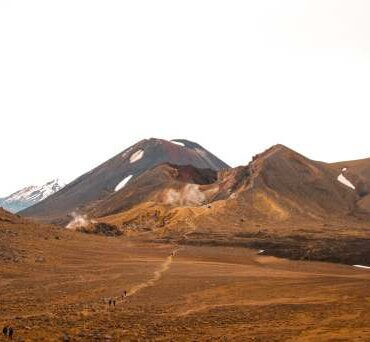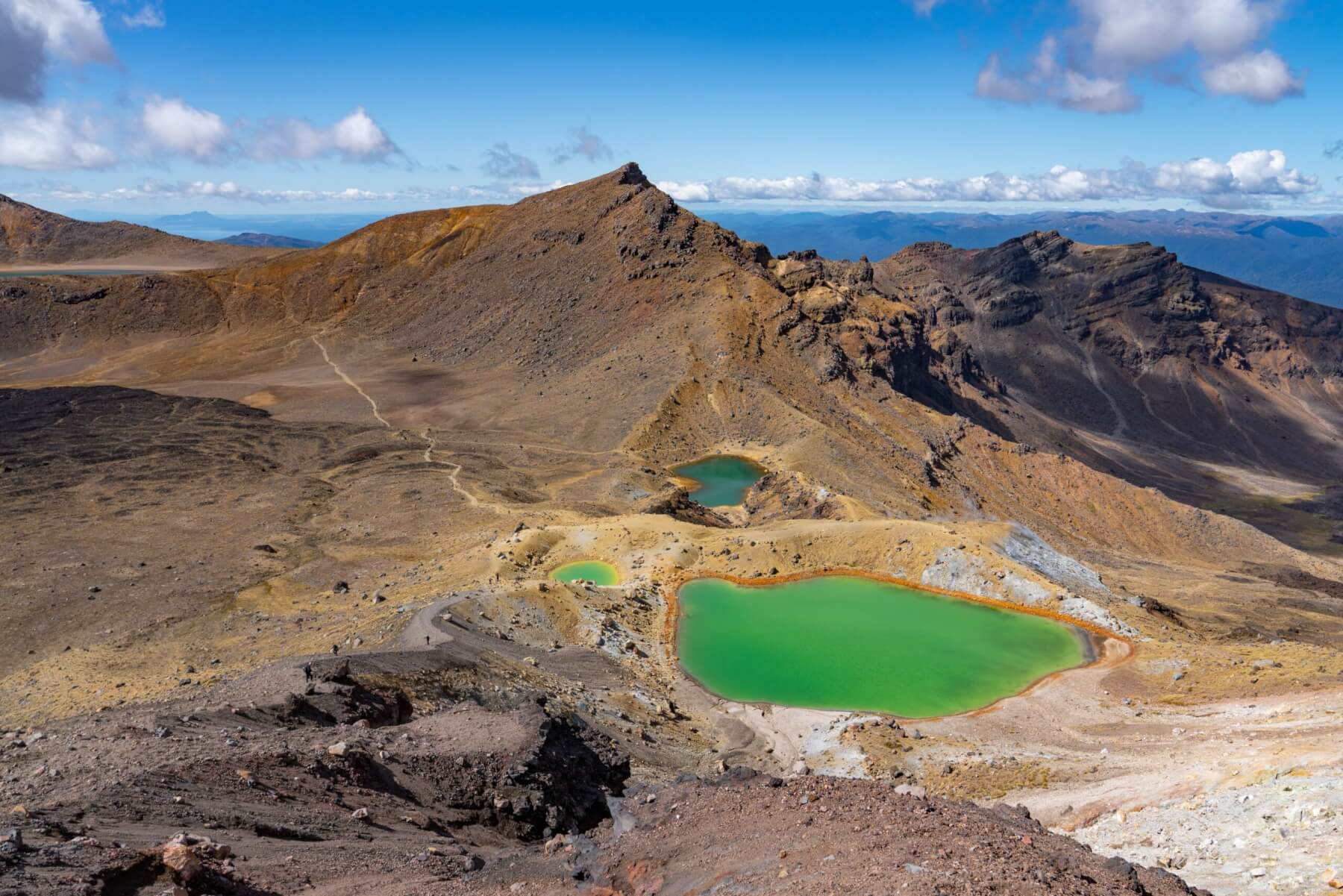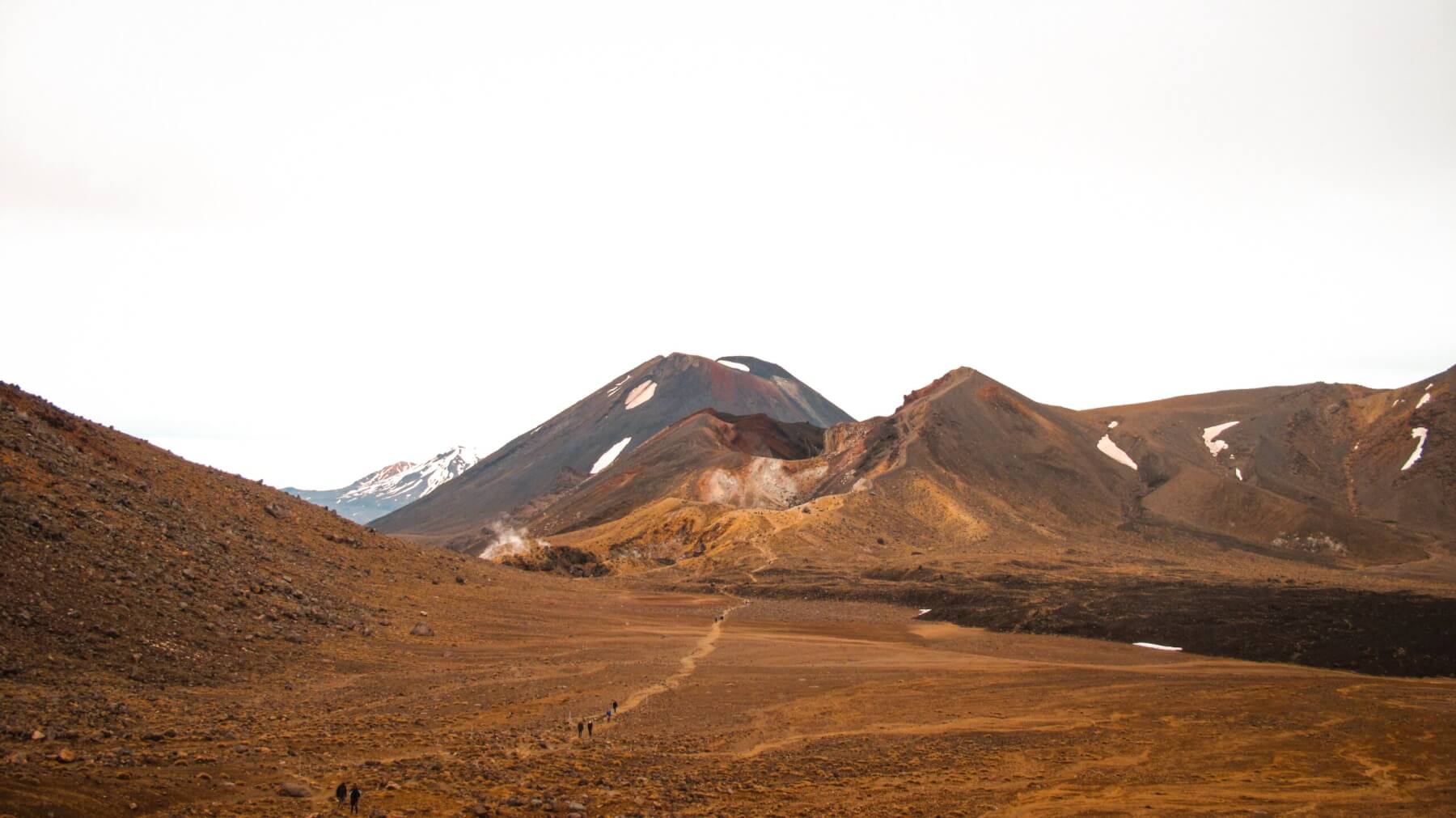
Hikers walking Tongariro

Amazing volcanic landscape at Tongariro with Emerald Lake in the foreground on a sunny day. Photo: Timo Volz, Pexels.com
Many volcanoes we see in images, on the screen, and in person are enormous mountains.
Some like the Tongariro Volcanic Complex and Ruapehu are so large that it’s best to train physically before attempting to walk across them. Some are much smaller, but can be grouped into even larger fields, like the Auckland Volcanic Field. The volcano or the field itself, however, is small compared to the magma system below it that is the source of all the action.
Natural hazards all pose their own unique issues. Cyclones are so large that we can track them through space, we can actually see them coming – even though the location they make landfall changes as they move across the ocean. With volcanoes, we usually know where magma will reach the surface, even though this can vary too, but we cannot physically see the magma as it moves towards the surface. Thankfully, decades of research has produced tools and techniques to detect it. Usually.
Most drawings we see of volcanic systems show one large magma “chamber” below the volcano. That’s not how it works. There is also the false assumption that it is all about pressure. Hole in the ground fills up with magma, pressure builds, pressure is too much, boom! In reality, because of the enormous pressures within the crust there are no massive holes just waiting to be filled with “liquid, hot magma”.
As rock melts it moves upwards though the crust because it has a lower density than the surrounding rock, think of pouring oil (less dense) into water. It can then accumulate in different zones. If it rises as a vertical, long body of magma we call it a dyke, if it moves laterally, we call it a sill. For magma to move anywhere it must squeeze through solid pressurized rock, breaking the rock as it goes and producing earthquakes. Most of these are too small to be felt.
There are tools and processes we can use to get information on the structure of the Earth below a volcano and the fluids it contains, like magma or geothermal waters. From using different techniques, we know that magma can form a complex network of veins through the crust and sometimes collects in smaller zones, not empty pockets that were already there waiting. Not all of this is liquid magma though. When temperature and pressure conditions change, solid crystals will start to form. Solid rock around the magma can also be broken off and taken along for the ride. These systems are constantly evolving on the scale of seconds to far longer than our human lifespans. These changes can also result in too much solid material for the magma to erupt.
The research that goes into understanding these vast systems and their signs of activity are all immensely helpful for detecting when an eruption is on its way, but all is calm at the surface. By monitoring these changes over time using different tools and techniques we can then see when a change means something else might be happening – that magma might be on the move.










